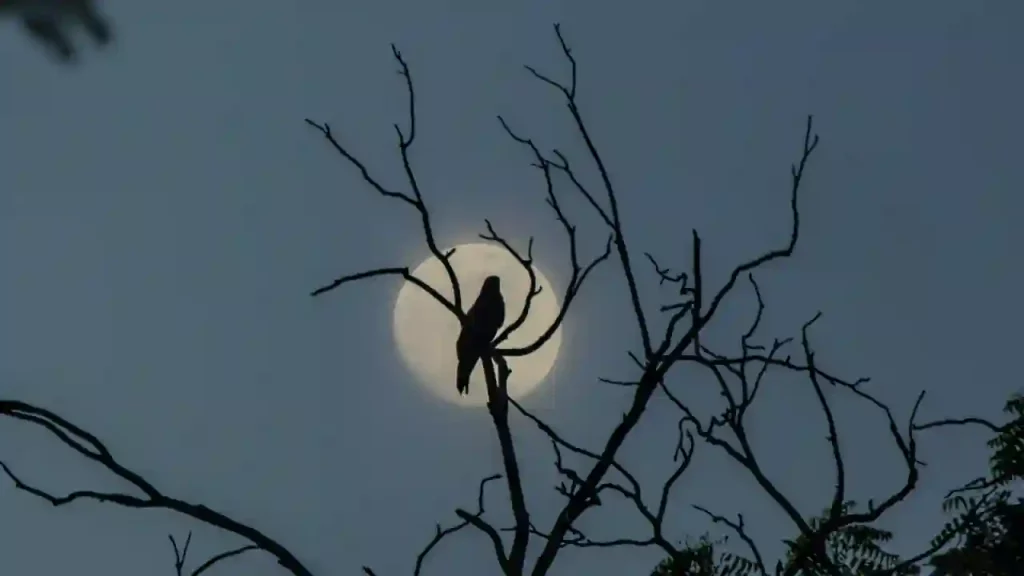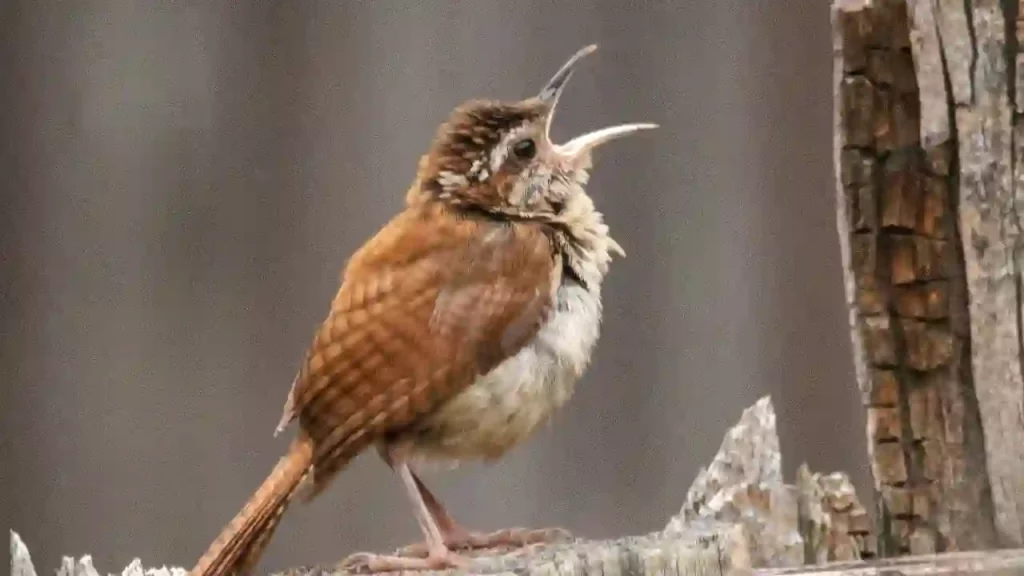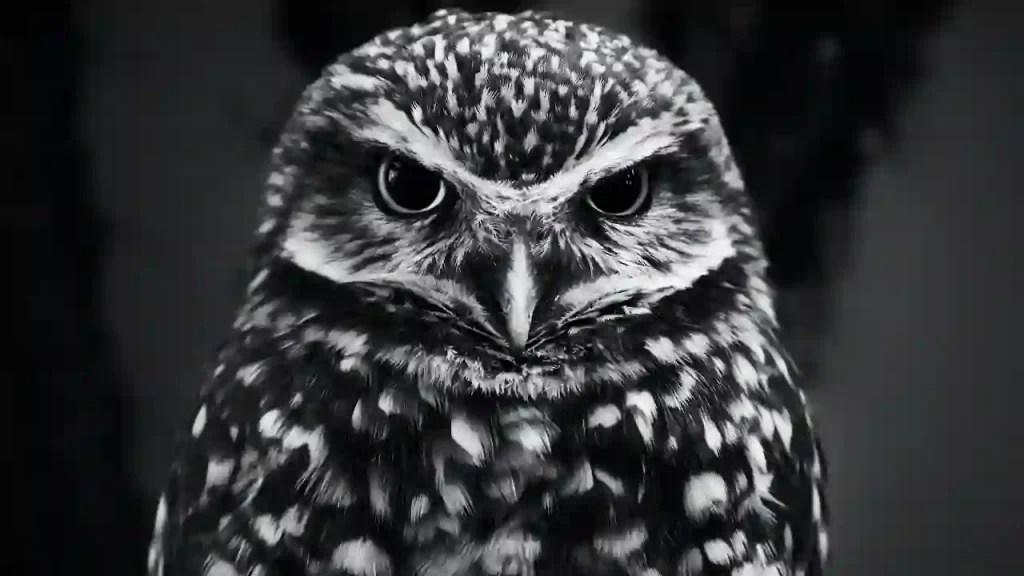Yes, birds very much fly at night. Some birds especially fly during the night; they are called nocturnal birds. They not only fly but all their existential activities: hunting, preying, migrating, socializing, mating, etc. are carried out in late night hours only.
These nocturnal species comprise widely-known owls, night herons, night jars, killdeer, and nighthawks.
On the other hand, the contrast category of birds is called diurnal, they are active during the day, however, you can spot them flying during the night on special occasions if their sleep has been disturbed, or they are migrating.
However, albatrosses and petrels, occasionally prey at night since their potential food rises to the surface during dark or mockingbirds who at times fill the woods with their symphonies in the moonlight.
Wouldn’t it be great if we brush up on some knowledge on nocturnal and diurnal birds before we learn more about why and what kind of birds fly at night?
Nocturnal and Diurnal birds

I assume the term nocturnal is not alien to you because every time we have heard of owls, we have crossed eyes with the term.
These birds are active during the night and sleep during the day. This is for various reasons, to avoid predation, to save energy during the migration, or to eliminate competition from the diurnal birds.
Zoologists have hypothesized that nocturnality has not been a feature of these set of birds from the start but they rather acquired themselves to survive natural selection.
In the process, staying up at night and slumbering during the day is what favored their chances of living.
Nocturnal birds have modified physiological traits such as advanced color vision which aids them to locate and attack their prey.
We are familiar with quite a few nocturnal species such as bats, fireflies, and raccoons. Among the birds, some examples would be owls, nighthawks, herons, and nightjars.
On the contrary, diurnal birds do their respective business during the day. Just like humans, they relax and go to sleep at night.
Most primates such as monkeys and apes; reptiles such as snakes and lizards, and amphibians such as tortoises and alligators are diurnal.
Some examples of diurnal birds would be sparrows, pigeons, falcons, pelicans, geese, cranes, and hawks.
However, these two classes do not cover the entirety of bird division based on their time of activity.
Other terms synthesized by zoologists are crepuscular and cathemeral. Crepuscular birds are active during twilight hours as dawn and dusk while cathemeral chose very specific hours, either during day or night and their activity is very limited.
Why do birds fly at night?

There could be several reasons for a bird flying at night. For example, hummingbirds are seen flying at night during their migration.
Here are some reasons for birds flying at night.
To act as per the natural course of existence
For nocturnal birds such as barn owls, nighthawks, and nightjars, it is only natural to fly and roam at night for hunting, nesting, protecting their territory, and other routine purposes.
Their biological clocks are set in a way and their bodies have altered to develop features that make them equally efficient to function during the night as the nocturnal birds and diurnal birds during the day. For them, flying at night is the natural course of existence.
To save energy during migration
Migration is an important feature of the lifecycle of migratory birds. Every year falcons, cranes, pelicans, swifts, and loons leave their summer home in a flock of thousands in pursuit of better food availability in the tropics in winter.
It needs to be noted that migration is an energy-intensive exercise, that’s probably the reason birds’ respiratory systems are also very sturdily built.
To traverse thousands of miles through the sky is not easy, that’s why birds chose to be in flight at the night and halt it for the days when the sun is shining.
To avoid predation
Zoologists have long back reasoned that the nocturnal species might have adapted to their timings to escape predation and thus survive continually.
This is perhaps true for warblers and hawks who avoid their ventures in the daytime and rather wait for the dark blanket of the night to foray into their expedition for food, shelter, and love.
To land better chances at prey
Seabirds and shorebirds as petrels, albatrosses, and killdeer keenly wait by the shore in the dark to attack and fish their prey when it rises to the surface.
Sea- animals such as planktons, squids, and several fish are afloat on the surface during the night unaware of the danger that awaits them in the form of eagerly waiting for hunter birds. It is then that these dexterous creatures land their chances easily at prey leveraging the dark.
To sing melodies
Songbirds such as Robins, Thrushes, and mockingbirds particularly prefer midnight to outpour their melodies in this world.
Though they are not necessarily nocturnal, they sing during different intervals at day and night alike but it is during the night that you can hear their music more prominently.
Some of these songs are also mating call signs, primarily given by males to achieve an association with a partner.
What birds fly at night?
Now that we have largely covered some of the reasons why birds possibly fly at night, let’s look at some of the birds that fly at night in detail and their motivation for this behavior:
Songbirds:

These include the mockingbirds which get their name from their ability to simulate hundreds of different individual noises that might be of insects or animals; Hermit Thrushes and Robins.
They are particularly prevalent in the landmass stretching both Americas and in between.
They do not essentially fly at night but sing elaborate melodies in the calm of the woods and this also forms a part of their technique to invite potential mating partners.
Owls:

Owls are not a single category and they are not all necessarily nocturnal. Some species of owl are diurnal and some are crepuscular.
For example, Great Barned Owl from Northern America roosts during the day and remains active at night whereas northern pygmy owls and northern hawk owls that occupy the western coast of the United Kingdom, follow a contrary behavior.
Nocturnal owls don’t have to be sleeping during the day, it’s rather a phase of inactivity and they might make the motion if facing any threat the same applies to the diurnal and crepuscular owls.
So, don’t be confused if you spot them in flight at non-assigned hours.
Shorebirds:

Seabirds and shorebirds such as herons, killdeer, albatross, swallows, and woodcocks find it easier to look for food during the night since there is no competition at night from the terrestrial animals on the shore.
They are also more active at night because in the scarcity of any light it gets tough for the prey to be able to defend itself and escape.
Summary
The encapsulation of the long winding explanation is that yes, birds fly at night and that is for different-different purposes. While some birds are specially adapted for the purpose, some do so when faced with an unusual circumstance such as their sleep being disturbed.
We learned how migratory birds maneuver their journey with rests during the day and flight during the night to successfully reach their destination.
While a majority of birds belong to the diurnal category, it would be safe to say at it is half the population of entire birds that remain up during the night because a portion of them is either migratory birds or songbirds who carry out their respective tasks at night.


